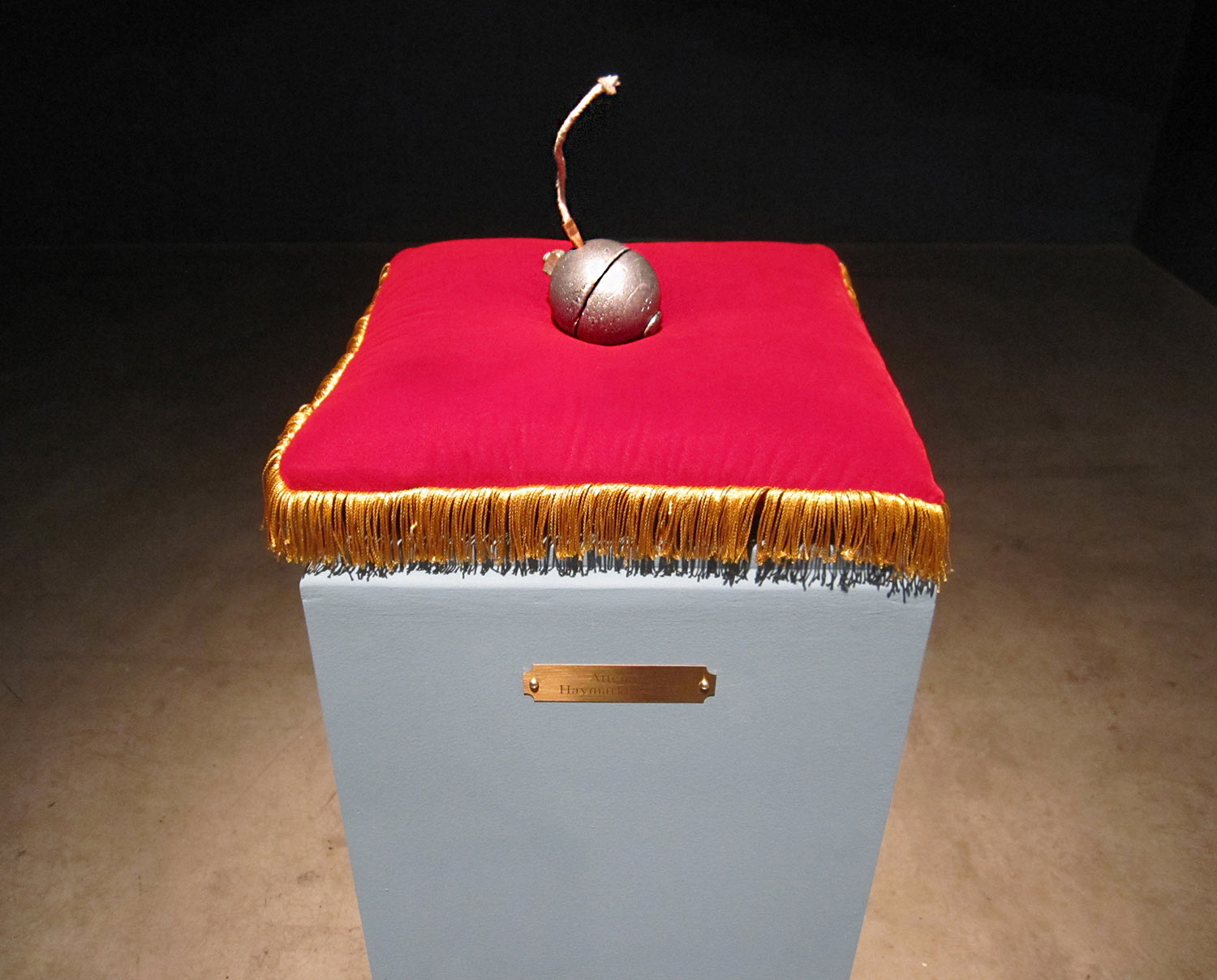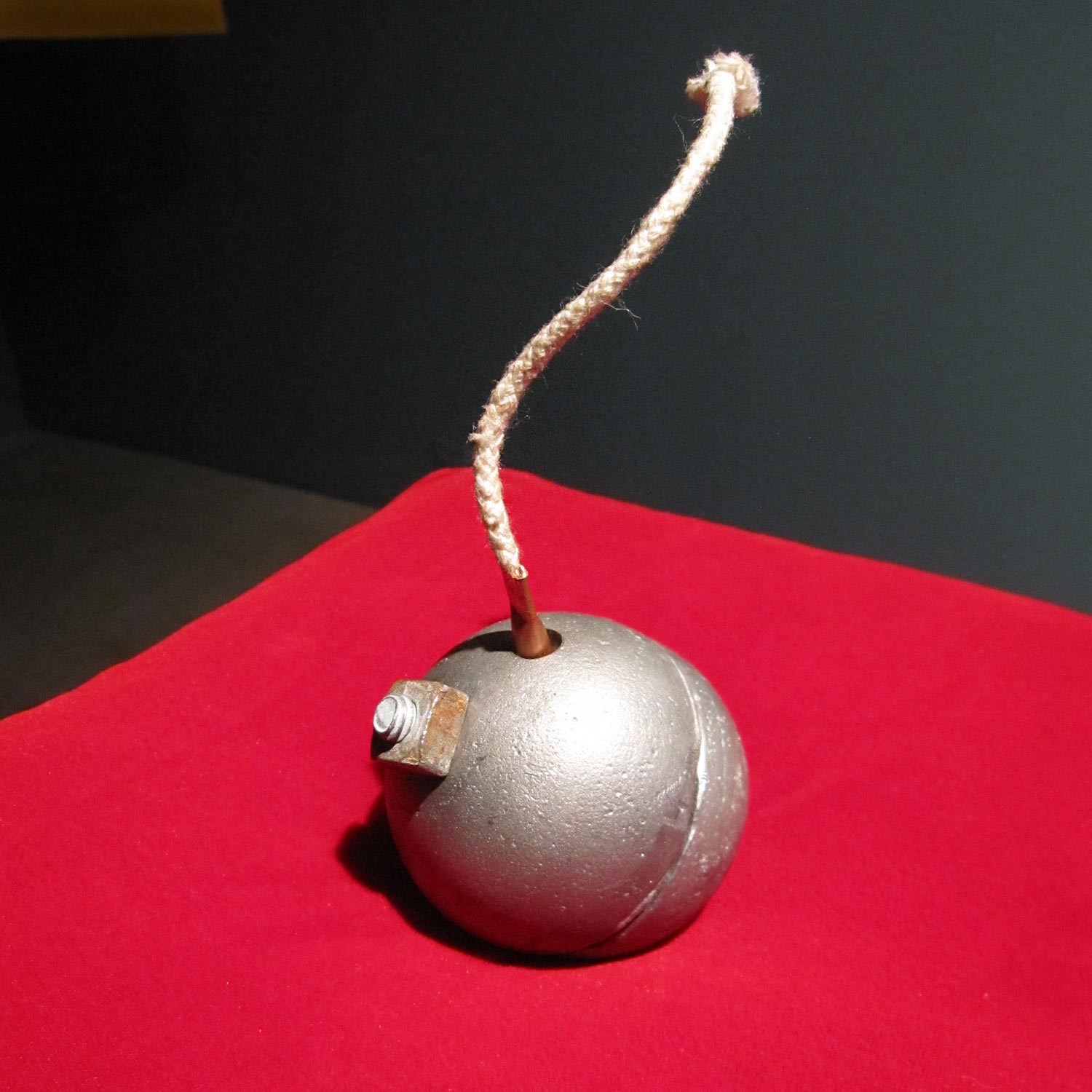Haymarket
cast lead + misc. parts, velvet pillow
by Rebecca Susman
2012
During a peaceful street meeting of labor organizers and workers in Haymarket Square in Chicago, May 4, 1886, police arrived as usual to disperse the crowd with batons. An unknown person lobbed a homemade bomb into the police ranks, and pandemonium ensued, eventually leaving several wounded, including at least four dead civilians and seven Chicago Police. In a now infamous move known as the Haymarket Affair, eight prominent anarchists with varying levels of involvement in local labor organizing were arrested in connection with the incident and sentenced to death: Albert Parsons, August Spies, Samuel Fielden, Michael Schwab, Oscar Neebe, George Engel, Adolph Fischer and Louis Lingg. None of them could be directly linked to the incident, and several were not even present at the meeting where the bomb had been thrown. Neebe received 15 years in prison, and later Schwab and Fielden received clemency and reduced sentences. Lingg committed suicide in prison. Parsons, Spies, Engel, and Fischer were hung on November 11, 1887.
This is a reproduction (sans black powder) of a lead clamshell-type composition bomb, based on photographic evidence of materials confiscated from Louis Lingg after his arrest in the aftermath of the Haymarket incident. This project was a part of a 2012 collaborative exhibition with Claire & Tesar Freeman: Commission for Treasonous Strategies.
“Although there’s no reason to think Lingg conspired with the bomber, he may have made the bomb. It was Lingg’s technique to fasten the two half-globes of his bombs together with nuts and bolts. The morning after the Haymarket explosion, a surgeon removed a nut from the rear end of a tailor, and when the Illinois Supreme Court reviewed the case on appeal, the Justices wrote that the nut screwed onto one of Lingg’s bolts exactly. In 2003, researchers re-tested surviving metal samples with energy-dispersive X-ray spectrometry. The results suggest that the chemists who tested the metal in 1886 were competent and honest. Shrapnel taken from one policeman’s body nearly matches what the 1886 chemists found in several bombs allegedly made by Lingg but now missing. The ratio of tin to lead in a surviving bomb is higher, but not by much. The researchers add an intriguing speculation: did the anarchists melt down type to make the casings of their bombs? If so, they suggest, “it would have been the literal transformation of their words into deeds.” As it happens, the same idea occurred to the Chicago police. The day after the bombing, they ransacked the Arbeiter-Zeitung print shop “like vandals,” seizing “old type and stereotype” as bomb components, according to an anarchist who fled the country.”
– Caleb Crain, “The Terror Last Time”, The New Yorker, March 13, 2006
Date
2012
Category
Sculpture & Installation




